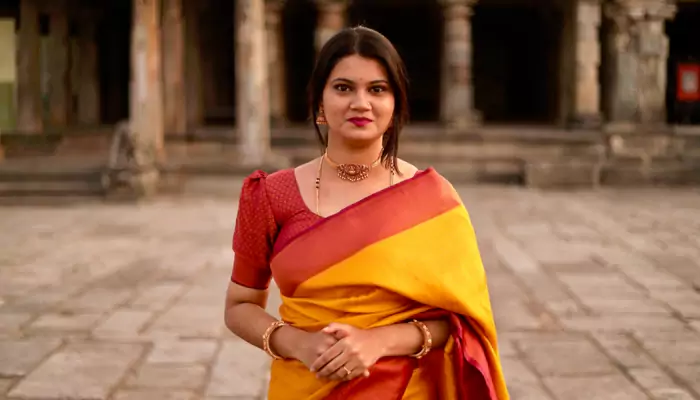World wardrobe wonders: Unique traditional clothing from every culture
Heads up: This fashion tour might have you eyeing some new clothes!
- Jayati
- 16 May, 2025
- 2 mins ago

World wardrobe wonders: Unique traditional clothing from every culture
Heads up: This fashion tour might have you eyeing some new clothes!
Traditional clothing isn’t just about what people wear; it’s like a living history lesson. When you see these unique outfits, you’re getting a glimpse into different cultures, their stories, and how they’ve shaped their style over the years. Each piece has its own tale to tell. So, let’s check out some of these amazing garments and the cool stories behind them!
Sari (India)
Let’s start with the sari, our very own classic. This garment is a true global star, known for capturing the grace and femininity of Indian women. It’s basically a long strip of cloth—between six to nine yards—that you drape around yourself to create a beautifully elegant look. You pair it with a fitted blouse and petticoat to get that perfect silhouette. Saris come in all sorts of vibrant colours and intricate designs, reflecting the unique craftsmanship of different regions. Dating all the way back to the Indus Valley Civilisation, the sari has been a favourite for thousands of years!

Dashiki (West Africa)
The dashiki is a colourful and comfy garment from West Africa. It’s known for its loose fit and bright patterns with fancy embroidery around the neckline. You can wear it as a shirt, tunic, or even a full-length dress. It’s a beautiful piece of clothing with a rich history, originally worn by the Yoruba people in Nigeria.
Sinh (Thailand)
The sinh is a charming traditional dress from Thailand and Laos, featuring a silk tube skirt in bright colours and simple patterns. In Thailand, it’s worn for special occasions, while in Laos, it’s a daily staple. Made of three parts—waistband, body, and hem—it’s stylish, elegant, and tells a lot about its wearer’s region!
Kimono (Japan)
The kimono is a fascinating piece of traditional Japanese clothing! It’s got these long sleeves and wraps around you, making it look super elegant. Usually made from silk, it’s got all these beautiful patterns that tell stories or celebrate seasons. It’s been around for ages, starting back in the Heian period, and it’s still a big deal in Japan today.
Kilt (Scotland)
The kilt is a classic Scottish garment that looks like a knee-length skirt with pleats in the back. Made from wool and featuring colourful tartan patterns, it represents various Scottish clans. Traditionally worn with a sporran (a small pouch), belt, and sometimes a jacket, the kilt has been around since the 16th century and is a proud part of Scottish tradition.
Gakti (Scandinavia)
Gakti is the traditional outfit of the Sami people from Scandinavia, including Finland, Sweden, and Norway. Made in bright colours like red, blue, and yellow, it includes a skirt and top for women, and a tunic and pants for men. Gakti is worn for special events and outdoor work, with its colours and patterns showing where someone is from and other personal details.
Kaftan (Morocco)
The kaftan is a traditional Moroccan robe that's long and flowing with wide sleeves. It’s often made from beautiful fabrics like silk and features colourful patterns and beadwork. While it has a history that goes way back, it became especially popular in Morocco and is still a stylish choice for special occasions.
Agbada (Nigeria)
The agbada is this awesome, flowing robe worn by guys in Nigeria. It’s got wide sleeves and is usually made from fancy fabrics like cotton or silk. With all its cool embroidery and bright colours, it’s not just stylish—it also shows off a bit of status. Worn by Yoruba, Hausa, and other groups, it’s the go-to outfit for weddings and festivals. It’s like a big, colourful hug of Nigerian pride and tradition!
Every region of the world has its own unique flavour, from language and lifestyle to cuisine and fashion. We hope you enjoyed this quick global tour of traditional outfits and maybe even got inspired for a little shopping spree!









